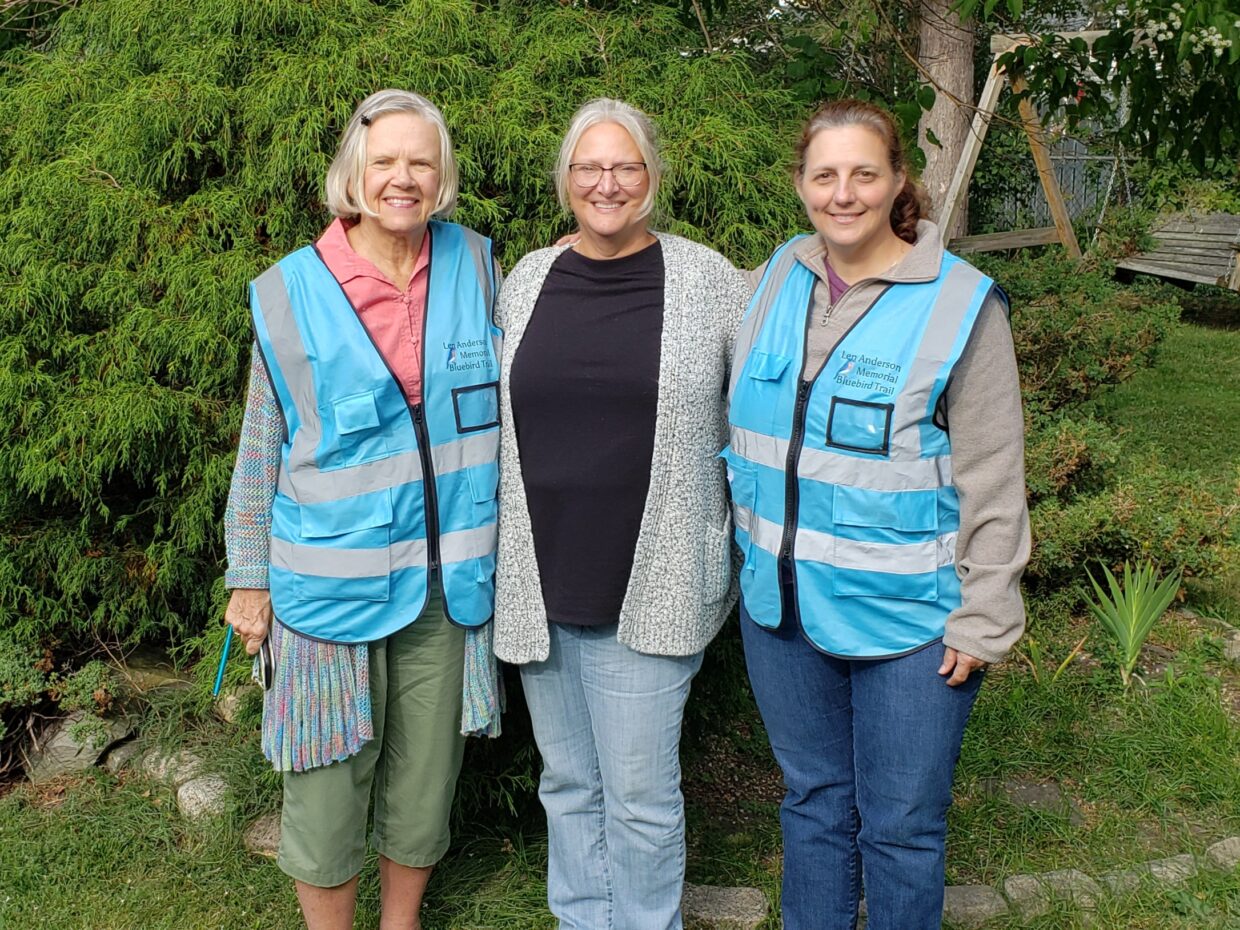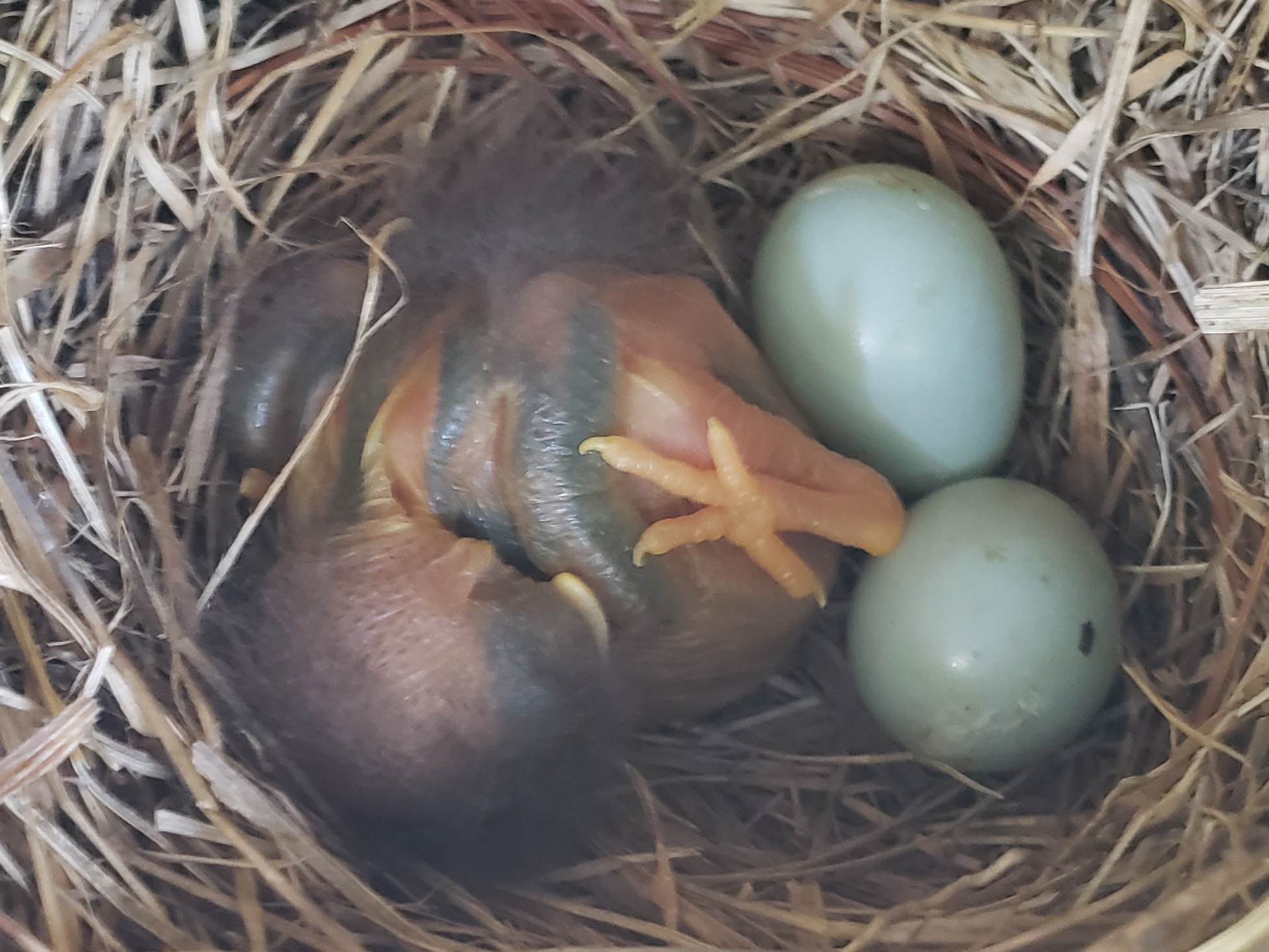The trees are changing colors, so the Bluebird nesting season is definitely over. Our hard-working volunteers collected a lot of data, and we are ready to let you all see it.
The Len Anderson Memorial Bluebird Trail consists of nestboxes in both Erie and Niagara counties. With 40 boxes to check during the height of Bluebird breeding season, it has been another busy year for us. We have 16 boxes spread out in four locations in Erie County and 24 boxes at a golf course in Niagara County.
Here are some quick stats from the two counties:

LAMBT Nest Box Data 2022 Erie

LAMBT Nest Box Data 2022 Niagara
We couldn’t be more proud of our 138 fledglings. That’s a 53.33% increase over last year. We worked hard to keep the boxes clear of predators, pests, and invasive species, and the numbers show what a little hard work can achieve.
Of course, these numbers include all the species of birds that utilize our boxes. We strive to aid the population of our state bird, the Eastern Bluebird (Sialia sialis). Still, House Wrens (Troglodytes aedon), Tree Swallows (Tachycineta bicolor), Black-capped Chickadees (Poecile atricapillus), and House Sparrows (Passer domesticus) will nest in the same places.
Our Bluebirds attempted 35 nests this season. A nest attempt is any nest with at least one egg present, but we also include nests constructed while monitoring the boxes, even if no eggs were laid as actively used nests.
We had 122 eggs, 71 nestlings, and 71 fledglings of the attempted Bluebird nests. Seventeen of the attempts produced at least one fully-fledged young. This year’s success rate is average for the Bluebird monitoring compared to our organization’s nine years.
There were 11 Tree Swallow fledglings and 35 House Wren fledglings. We did have two Chickadee nests at the beginning of the season, one with an egg, but nature prevented it from succeeding. We are unsure at this time what caused the failure of the nest, but we suspect it was House Sparrows.
As for the House Sparrows, an invasive species, we try to prevent them from nesting in the boxes. The persistent birds made many nest attempts, and our job was to remove them and any eggs as quickly as possible. We successfully prevented 91 House Sparrow eggs from hatching and becoming a nuisance or danger to the other birds.
You can find the full collection of stats here.
We want to thank everyone who could make it to our fall meeting. It allowed us to review some of our processes and discuss any changes needed on our trails. Our volunteers have done a great job and deserve a little break until spring, but we still have work to do before the first snowfall. We want to ensure our nestboxes are in good repair for the returning birds. Many Bluebirds will search for a nesting spot as early as late February and early March.

Happy Volunteers from left to right: Kristine Jegierski, Cheryl Cantlon, and Angela T. Baron
If you’re interested in volunteering to monitor our nestboxes, please contact us. The experience is rewarding and a benefit to nature and our communities.

